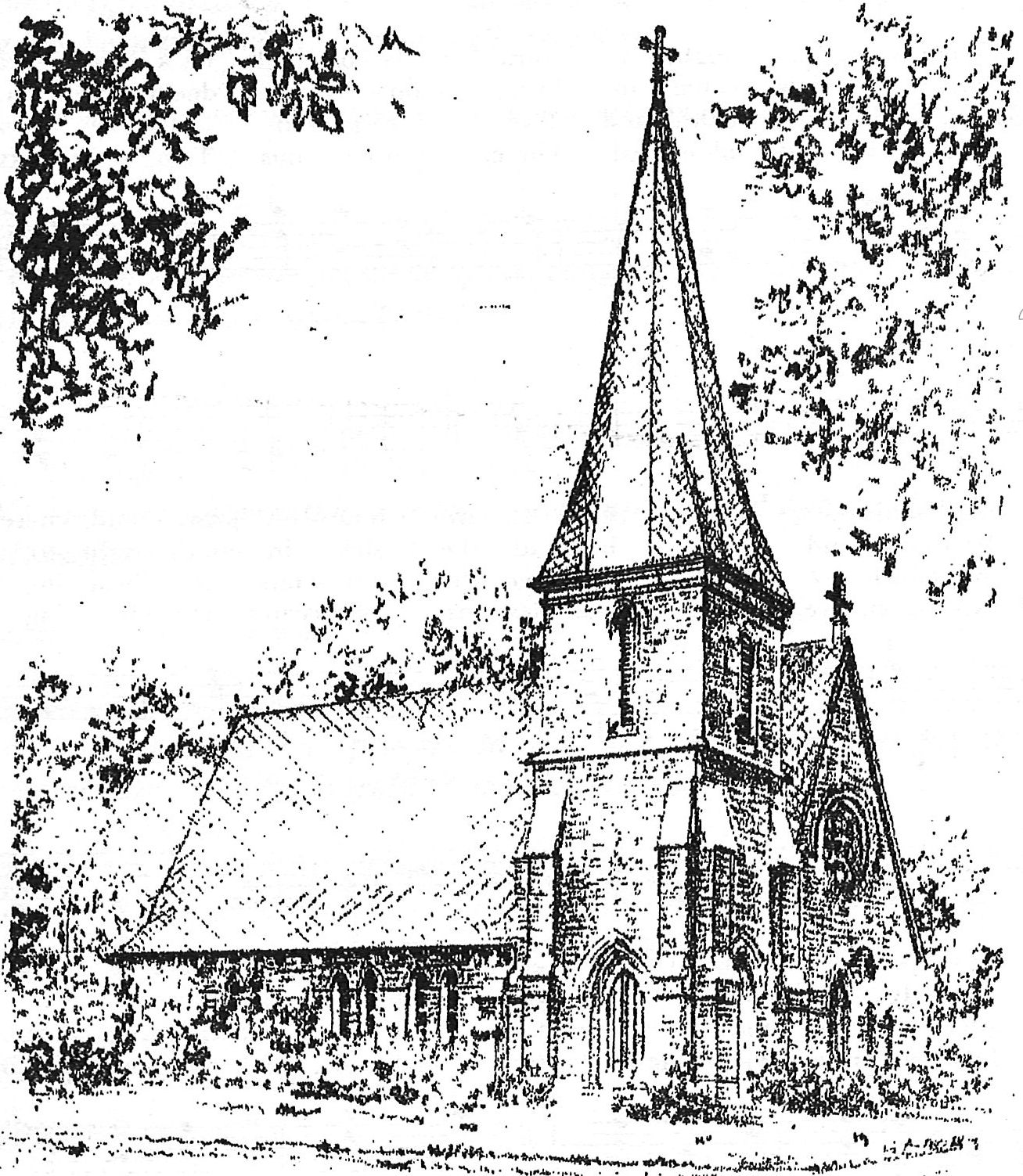And immediately I was in the spirit: and, behold, a throne was set in heaven, and one sat on the throne (Rev. 4:2).
It has been said that Trinity Sunday is an excellent opportunity for a preacher to scoop up and hand deliver any heresy he happened to miss on Whitsunday. Indeed, the temptation for any presbyter is to try and perfectly explain the Trinity, to attack an unsuspecting congregation’s brain with a dizzying array of anecdotes and analogies—all of which will, in one way or another, lead us into a finite and deformed understanding of the Godhead. And so, I will not be doing that today: we have the Bible and its summary in the catholic Creeds, and these provide a clear lens for gazing into the intense mystery of God, anything which goes beyond these texts should rightly be held in suspicion. What isn’t often considered is what a gift this mystery is to us. What a gift we have received in that God has revealed Himself in mystery, so that we may spend our days and nights contemplating and worshipping His incomprehensible glory. This truth is an antidote to the materialism of our age: we cannot buy God, we cannot own God, we cannot even fully comprehend God. Here, we should be reminded of the 1st chapter of John’s Gospel: “…the light shineth in darkness; and the darkness comprehended it not” (John 1:5). The Greek word behind “comprehended” contains a sense of seizing or taking possession of something, and we should be quite clear that we cannot overcome or take possession of the Living God; we cannot make Him our mascot or co-opt Him to strengthen our tribe. The Trinity is sovereign, and we live or die based upon our adoption and allegiance.
We are given a glimpse of this same sovereign God in chapters 4 and 5 of the Revelation of St. John. Here, again, mystery is in ample supply. Revelation is not a book for us to take and manipulate for our own purposes, usually, to make the time in which we live the central focus of the text. No, there is intense comfort to be found in the visions our Lord provided for His beloved apostle, but it never stems from being able to draw direct correlations between the visions and cable news. As a general rule, if one ever finds oneself saying something like, ‘Wow, this beast must be the senate minority leader,’ please, stop, take a nap, and read more Old Testament. Truly, our interpretive guide for the 4th chapter of Revelation should not be a Kirk Cameron or Nicholas Cage movie but the actual framework St. John is writing in: the apocalyptic prophecies of Daniel, Ezekiel and Isaiah. The apostle is taken, through the Holy Spirit, into the timeless presence of God and His heavenly court. John, like the prophets before him, describes what he sees in the language of Scripture, and fascinatingly, we can see in the differences between he and the other prophets that while all the men are talking about eternal reality, they reach for different symbols to describe events happening throughout the church age. Our personal connection to the text is not that we are the stars of its pages; rather, our connection to St. John and to the generations of Christians who have read these words is through us all being alive during the ‘last days’ of a post-resurrection world. The resurrection of Christ has broken this fallen world in a way which will inevitably result in a new world of vindication for the faithful and punishment for the rebellious persecutors of the good.
This reality is made visible to St. John, and to us, by seeing the crucified and resurrected Jesus sitting in the heavenly throne. A terrible tragedy of so much discussion of Revelation is how fast people blast by the main image of the book: a glorified man sitting on the great throne of heaven. Through the life, death, resurrection and ascension of Jesus Christ, humanity has been elevated from the broken ghettos of a fallen world into the resplendent home of love and truth and beauty. If whip and cross and tomb could not steal this majesty from Jesus, what could possible steal our future glory from us? This question, and its eternal answer, were not abstract or merely intellectual to John’s original audience, not while the Roman Empire tortured and murdered their brothers and sisters in the faith, nor should it be an abstract question to us as we suffer in a world designed to fool us into thinking we are gods, designed to fool us into thinking we already sit upon an eternal throne. We don’t, the only eternal sovereign throne is occupied by the true king of the universe. It is His glorious reign which has outlasted the throne of Caesar, the throne of Charlemagne; it is His throne which will still be occupied when the Arc de Triomphe is dust and the Resolute Desk is matchsticks. St. John shows us that all heavenly and earthly beings find their meaning in their relation to this throne; we are all judged by our response to that first Christian creed: ‘Jesus Christ is Lord.’ This creed is made visible in the heavenly kingdom daily preparing to invade our fallen and desperate land.
So then, it does not matter how many victories evil seems to win; it doesn’t matter how many times we are disappointed; it doesn’t matter how many times the very people and institutions we trust use us and betray us for far less than 30 pieces of silver. If we say, ‘Yes’ to that creed, we say ‘Yes’ to trusting in Christ Jesus’ divine reign; we say ‘Yes’ to facing the suffering and persecution and loss He will re-direct for the glory of a new world and a new humanity reborn to enjoy it forever. It is this new creation St. John is seeing in the very appearance of Christ on His throne, for Christ is the first man of the new creation and to see the victorious enthroned Jesus is to see something like His divine light passing through the precious stones which St. John later tells us make up the very foundation of the New Jerusalem—the capital of the new heaven and new earth not made by human hands but received by a redeemed world when Christ returns with His warrior angels and battle tested saints. This light, emanating from the king of the new creation, forms a rainbow around His throne; thus, connecting Christ’s everlasting reign with the symbol of God’s mercy to Noah and the humanity he represented. Just as the first rainbow signaled God’s promise to never destroy the earth with water, this new heavenly rainbow signals God’s promise to never allow anything, not even mutilation or chemical castration or even death itself, to destroy His children of grace. By the power of the Holy Ghost, St. John has seen the victory of the Son guaranteed by the Father; St. John has seen the Trinity’s victory of love over death.
What then should be the response of humanity to this glorious good news? The same response as the 24 presbyters, the 24 royal priests who sit on thrones of their own. These are the 12 patriarchs of the Old Testament and 12 apostles of the New dressed in the white garments of those washed in the blood of the lamb. These chosen men represent the entire people of God in worship before God’s throne. The very gates and foundations of the New Jerusalem are inscribed with their names, but here they are, worshipping the King of Kings and Lord of Lords. They are joined by 4 winged creatures who represent all the animate life of the creation, a group of creatures also associated with the 4 gospels, whose pages praise and reveal the Trinitarian Godhead worshipped day and night with the angels’ words, ‘Holy, holy, holy, Lord God Almighty, which was, and is, and is to come’ (Rev. 4:8). The eternal God receives everlasting praise, and the 24 elders throw their crowns before Christ’s throne in the recognition that all glory, laud, and honor belongs to our redeemer king.
Finally, as we the church militant look upon the church triumphant today, we see the purpose of human existence, the end for which we were created. All things are created for a purpose. The squirrel has a purpose in life (jump around, eat nuts, make more squirrels, repeat), and he is most a squirrel when he fulfills that purpose. Human beings are blessed to have a far higher purpose; although, you wouldn’t know it given the sad, dehumanized vision of human flourishing presented to us by the world. The world says be like a squirrel; God says be like a human, and we are most human when we do that which only humans can do: when we love and worship the true God, when we love and worship the Trinity. It is this action which is the highest of all human activities because it is the only human activity connected to the glorified humanity which is our destiny; it is the only activity which is connected to the 24 royal priests worshipping the great high priest and everlasting king: Jesus Christ. Our worship is designed to mirror the worship of heaven because when we pray together, assembled before God’s altar and throne, we join with those who already know the joy and completeness which await us. When we gather together as Christ’s church, we are united in communion with the angels and saints who breathe in victory and exhale peace. When we gather together as Christ’s church, we find our meaning and purpose in the covenant promise of the Father, the Body and Blood of our Savior, and the peace and love created in our hearts by the Holy Spirit. In short, we become Trinitarian by being the church, and if we know that, we already know the very meaning of life.

